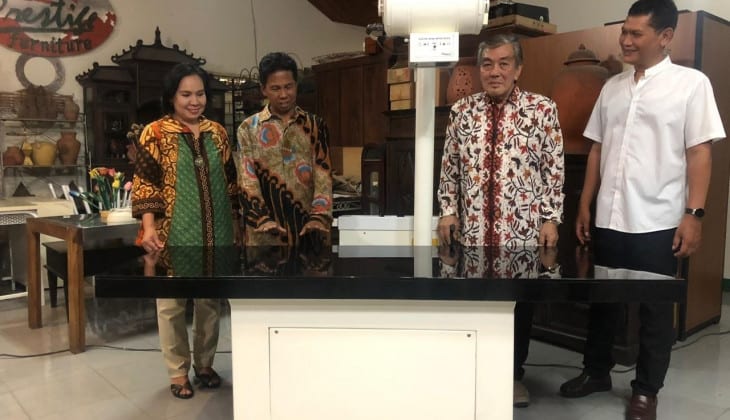
The research team led by Dr. Gede Bayu Suparta from the Department of Physics Faculty of Mathematics and Natural Science UGM has developed Madeena, a digital X-ray radiography technology for medical diagnosis.
The technology uses a fluorescent screen and digital camera, called the Digital Fluorescent X-Ray Radiography (Radiografi Sinar-X Fluoresens Digital; RSFD). The performance of RSFD is equivalent to Direct Digital Radiography (DDR) technology which uses flat detectors, also called Flat Radiography Detector (RFD). This device is much sought after by Indonesian hospitals.
“Due to the high price of DDR, not all hospitals can have it. (The high price) implicates the cost to be paid by the patients,” said Gede.
With Madeena, costs can be reduced. Bayu said the device can be accessed in real time without the having to wait for manual film printing like other conventional X-rays. Doctors can also access Madeena without having to be in the radiology location. The process can be done very quickly through radiographers, medical physicists, and radiologists online.
“So, physical presence in a health institution can be reduced. In addition, the radiography process is very safe for patients, radiation workers, nurses and paramedics because the radiation exposure reaches 1/100 of the threshold value set by BAPETEN,” he said.
Bayu said Madeena, which stands for “made in Indonesia”, was launched in early November 2019 after going through a long research journey since 1989. In 1989, he and the research team began to conduct research in the field of digital radiography. At that time, computer technology, digital camera technology and programming were not as sophisticated as they are today.
“However, I have a vision that one day conventional film-based radiography devices will be replaced by digital radiography systems when the performance of computer technology, digital camera technology and coding techniques have advanced greatly,” he said.
“Patent of this device has been submitted to UGM as an intellectual asset of Indonesia,” he explained. The patent was granted on 19 October 2009 with patent number ID P 0024437.
Downstreaming of the product just started in 2019 when Gede and team gained the momentum to develop the technology significantly. His team along with PT. Madeena improved the RSFD prototype in the laboratory of Fisika Citra FMIPA UGM and in BRSU Tabanan, Bali.
“Finally, Madeena can be downstreamed through a partnership between UGM, PT. Madeena, and CV Prestige. This has proved the success of research downstreaming of UGM to business communities,” he said.
Gede hoped that the RSFD device would later be available in 3,000 hospitals and clinics as well as 9,000 community health centers in 34 provinces to provide health status checks. Combined with a teleradiology system, RSFD would allow to document health status of all Indonesians with a minimum retention period of 10 years.
“If the health status data can be maintained, the quality of Indonesian human resources can be predicted,” he said.
Source: https://ugm.ac.id/id/berita/18745-peneliti-ugm-berhasil-kembangkan-alat-rontgen-berbasis-digital


